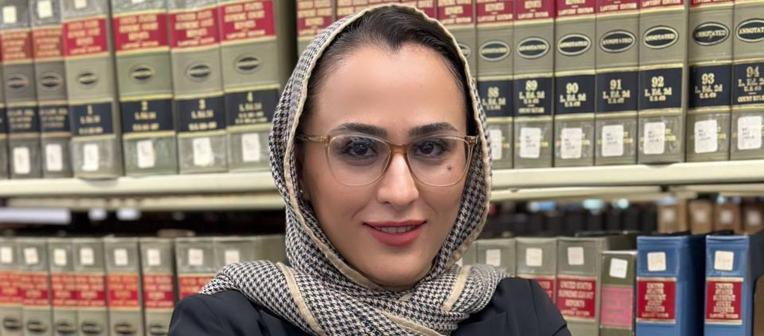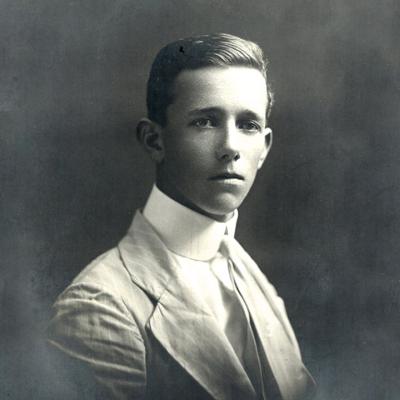I began my research project at the Fryer Library in June 2024. Even before the official start date, I eagerly asked if I could begin early. My curiosity to see and read the letters and explore other materials in the collections was overwhelming. Simon Farley and Kirsty Rickett, two incredible librarians working at the Fryer Library, kindly accommodated my enthusiasm. Despite some pending formalities and preparations, they arranged everything so I could start right away.
I was given a small, comfortable office on Level 5, just above the Fryer Library. Inside, two collections of letters awaited me: the Ghulam Hassan Letters and Julian Burnside and Kate Durham Papers. The boxes, neatly placed on a blue trolley in the corner of my office, marked the beginning of what could become an emotionally charged and intellectually demanding journey. I started with the Ghulam Hassan Letters —a single folder— before moving on to the Julian Burnside and Kate Durham Papers, which included several boxes filled with hundreds of letters, photographs of refugees in Nauru, and other artefacts.
After a few days of reading, I found myself pausing often. The sheer volume of letters, their rawness, and the emotional weight of the stories they contained were overwhelming. I had not anticipated the intensity. Yet, I had to persevere, as my research depended on it. For weeks, I oscillated between reading and stepping away. At times, I left my office to walk around the campus, clearing my mind before returning to the work.
Each day presented a new challenge. Some days I read letters by children; other days, from men and women recounting their harsh realities. There were moments I encountered the final letters of Afghan refugees, not from Nauru, who had been forcibly returned. One day, I came across a collective letter (written in Dari), signed by a group of women detained in Nauru. Among the names was one identical to my mother’s: her first and family name. I froze. The familiarity struck me deeply and personally. For a moment, I imagined: She could have been my mother.
Reading these kinds of traumatic stories was not entirely new to me. For years, I have researched Kurdish diaspora literature, studying the works of Kurdish poets and novelists whose writings bear witness to the personal and collective traumas of war, violence, and oppression. These literary testimonies, while deeply moving, are often filtered through layers of poetic expression and narrative construction. The materials in the Fryer Library, however, are profoundly different—raw, immediate, and deeply personal. These are not crafted stories but genuine pleas for survival, written in real-time by refugees experiencing unimaginable hardship. The visceral reality of these letter struck me in ways I had not anticipated, bringing an unparalleled sense of urgency and weight to my research.
As I continued reading the letters, their pain and suffering began to seep into my consciousness. The more I read, the more deeply connected I felt to their anguish and resilience. It was a profoundly challenging experience, but gradually I adapted. Perhaps, this was what Marcel Proust so eloquently describes in In Search of a Lost Time as the power of custom:
“Custom! That skilful but unhurrying manger who begins by torturing the mind for weeks on end with her provisional arrangements; whom the mind, for all that, is fortunate in discovering, for without the help of custom it would never contrive, by its own efforts, to make any room seem habitable”
Custom transformed not only my room but also my emotional state, making both habitable for me. I settled, both physically and emotionally. The letters, once felt overwhelming, became a source of insight and understanding. I was finally able to focus not only on their content but also on their deeper significance.
Custom, however, could do nothing for the refugees in Nauru, as revealed in their letters. The more I read, the clearer it became that their suffering, stripped of any adaptation, only deepened with time—becoming more entrenched, rawer, and more indelible in their voices. It was as if the passage of time magnified their anguish and silenced their hope.
Yet, it was not just custom that made this possible for me. The incredible people at the Fryer Library and the broader UQ Library community played a significant role. Their kindness, support, and engagement enriched my journey. Participating in activities centred around Fryer’s collections, particularly those I was working on, brought new dimensions to my research.
In September, I had the privilege of introducing these collections to students from two UQ courses: Immigration and Refugee Law, taught by Professor Peter Billing, and Migration, Culture, and Identity in Anthropology, taught by Dr. Gerard Hoffstaedter. These students visited the Fryer Library to engage with the letters individually and collectively while also exploring other materials as part of their coursework. Witnessing their reactions and facilitating their discussions was truly meaningful. The law classes discussions opened my mind to legal dimensions of the letters, an aspect I had not fully considered before. Initially, my focus had been on the cultural and linguistic elements but preparing for these sessions prompted me to explore the legal struggles and implications embedded in the letters. Sharing this perspective with the students not only enriched their understanding but also expanded my own.
The linguistic challenges by these refugees remain central to my analysis and interpretation of the letters. A thorough discussion of these linguistic aspects falls outside the scope of this blog, but they will be explored in greater depth in forthcoming publications. However, I can briefly touch on key elements.
Despite the apparent simplicity of the language and the frequent errors, the letters written by refugees demonstrate remarkable narrative coherence and structural complexity. Composed under extreme psychological and linguistic duress, these letters reveal how individuals with limited linguistic resources still construct well-organized and meaningful narratives. Far from being disjointed, these stories follow clear argumentative patterns: they present evidence, draw conclusions, and organize personal experiences in ways that reflect a profound understanding of narrative structure.
This coherence is culturally and contextually significant, as it illustrates how refugees, even with constrained English proficiency and often limited education in their native language, convey complex realities through their letters. The interplay between linguistic limitation and narrative depth shows that while the surface-level language might appear ‘broken’ and ‘simple’, the underlying structure of the stories is intricate and far from fractured. These letters highlight the resilience and creativity of the human spirit, even in dire circumstances.
In the coming months, as I continue reading these letters, particularly the Elaine Smith Papers, I hope to uncover more about the legal, cultural, and linguistic aspects, as well as the humanity, resilience, and creativity embedded in these materials. For now, I carry forward the lessons learned during this early period of adjustment, knowing that even in the most confronting of circumstances, the human spirit can find ways to adapt and endure.





